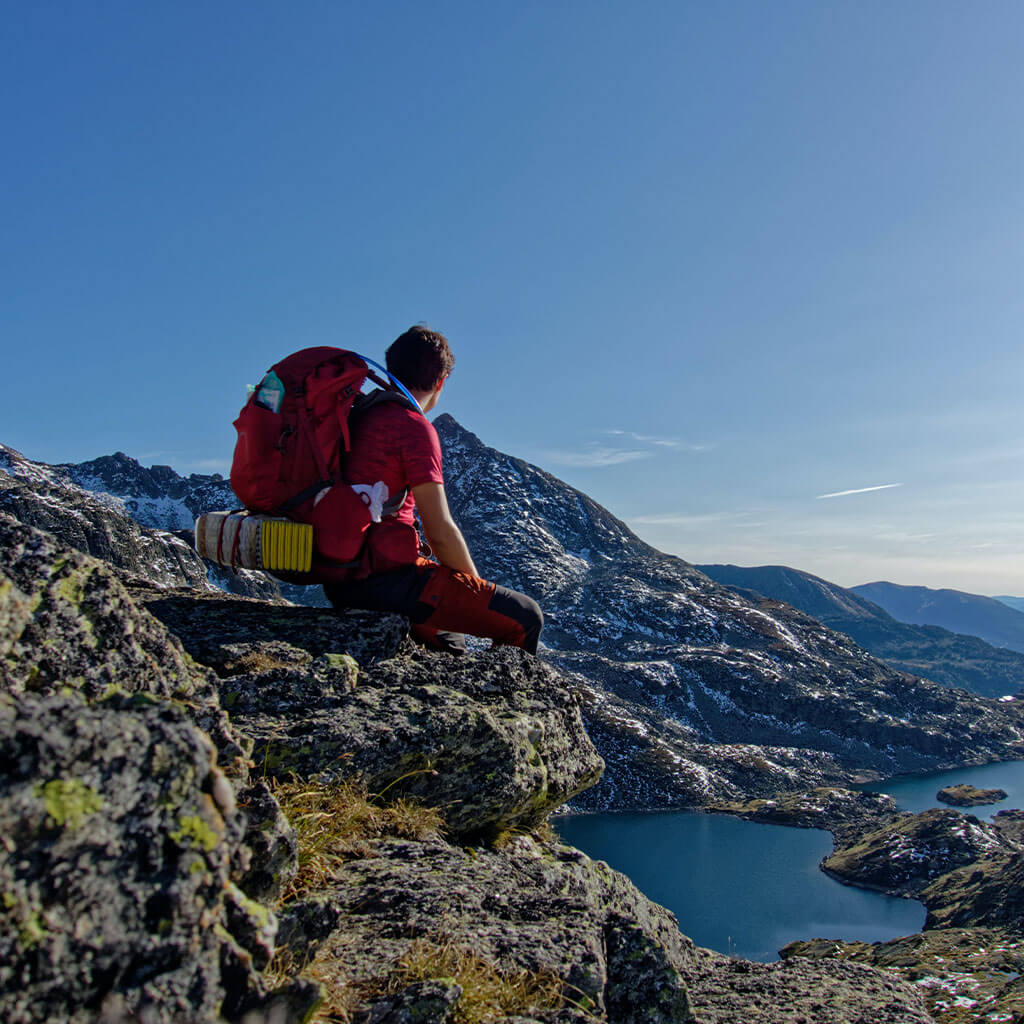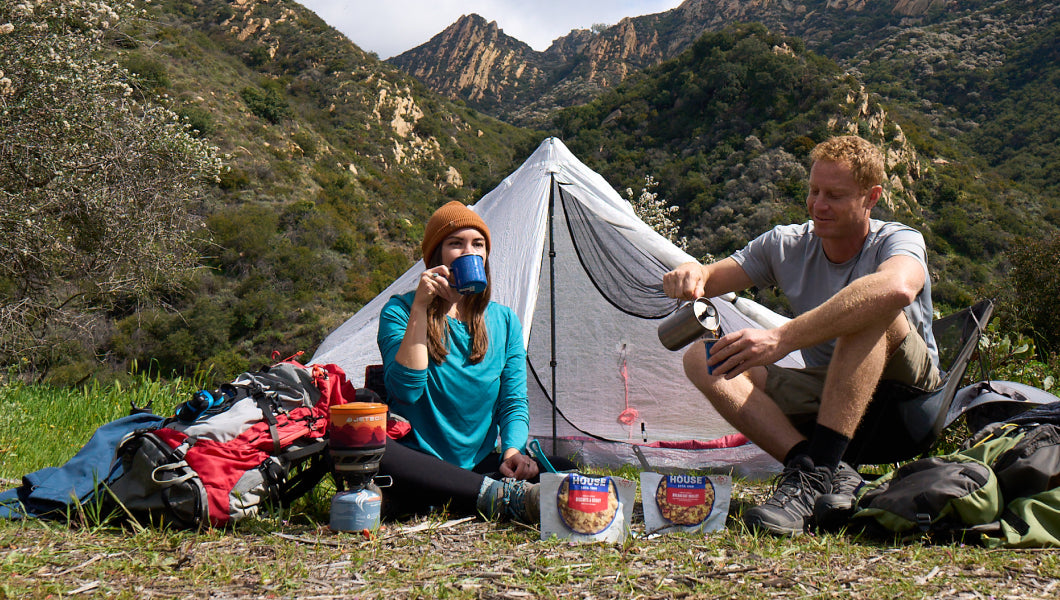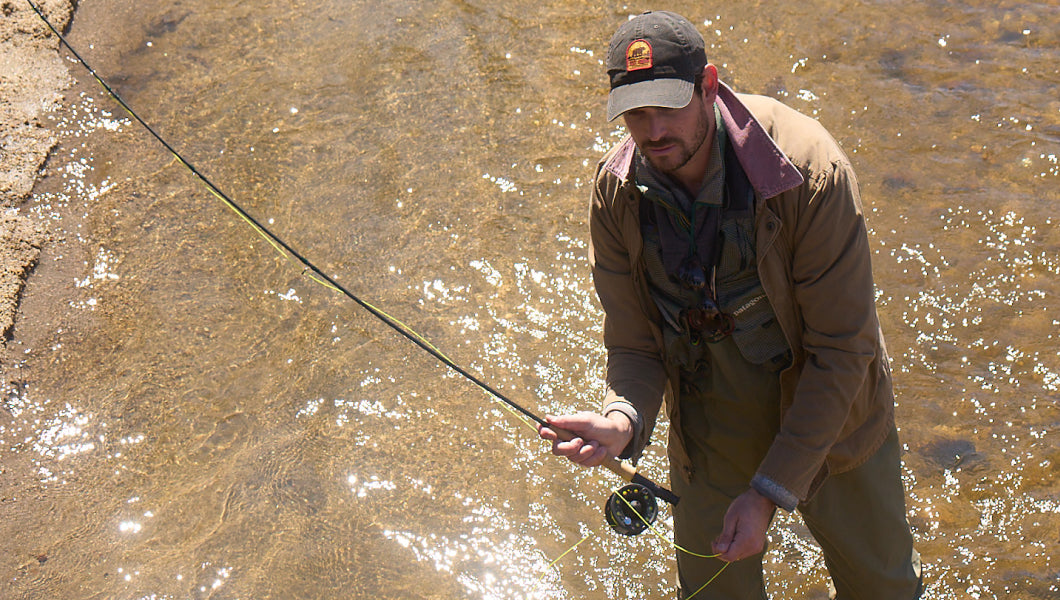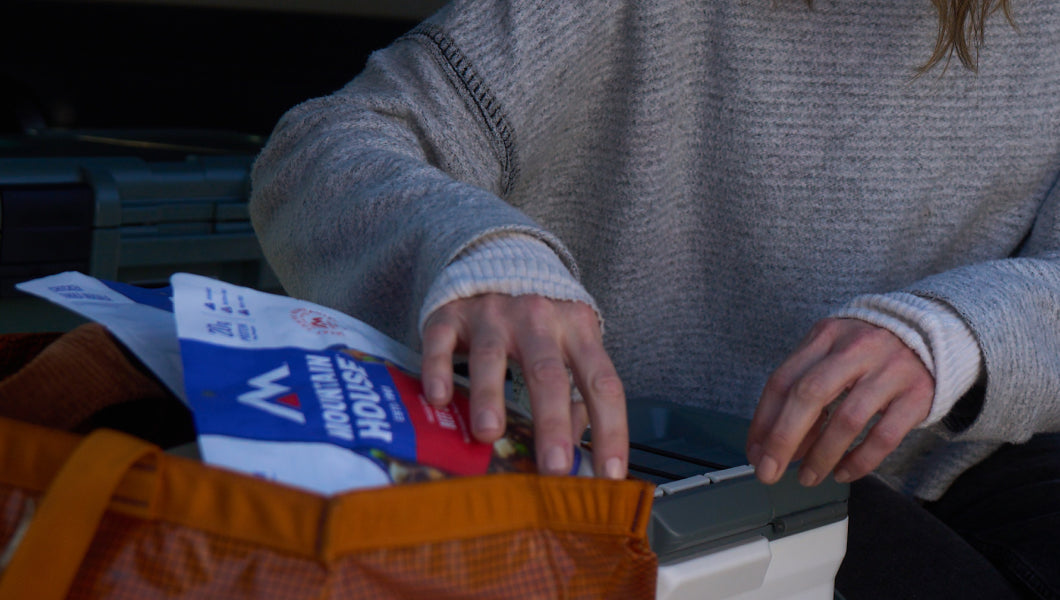Inspired for an Adventure? Check out Beef Stroganoff - Pouch and Beef Stew - Pouch
Free Ground Shipping On All Orders
Over 2,100 Reviews
Add description, images, menus and links to your mega menu
A column with no settings can be used as a spacer
Link to your collections, sales and even external links
Add up to five columns
Add description, images, menus and links to your mega menu
A column with no settings can be used as a spacer
Link to your collections, sales and even external links
Add up to five columns

A History of Modern Backpacking
Today we're turning the Mountain House blog into a history classroom, but don't worry, it's a topic we don't think is going to provoke any glazing-over of the eyes. Our focus — certainly near and dear to our hearts — is the backstory of backpacking.
Now, on one level backpacking is as old as our species: Humans have been toting the gear they need to survive (not to mention babies) on foot for a staggeringly long time. (We also came to muster dogs, horses, cattle, and other beasts of burden into the task of hauling equipment and supplies, of course.)
But we’re talking here about modern backpacking: in other words, backpacking meaning a recreational outdoor pastime that sees you carrying everything you need on your back while you enjoy a multi-day sojourn in the wilderness. Hiking combined with camping, essentially. (Obviously, we’re not talking here about the other, related modern definition of backpacking: living out of a backpack while you travel and sightsee on the cheap.)
Here’s a quick look at some of the roots of modern backpacking, which for many is as much a spiritual need, a shared family experience, and a getting-back-to-deep-roots activity as it is an outdoor sport.
A Snapshot History of Modern Backpacking: 19th-Century Roots
Not least because it’s strongly tied to a timeless human lifeway, it’s impossible to pinpoint the exact origins of modern backpacking—though we can parse out the development of the modern backpacking pack, which we’ll do below. That said, wilderness backpacking as we know it owes much of its spirit and its nuts-and-bolts process to trends in outdoor recreation in the 19th century.
That’s when modern mountaineering really took off, with climbers in the Alps pioneering the “bagging” of high summits. It’s also when the philosophical movements of Romanticism and, in the American Northeast, Transcendentalism saw a greater value being placed on the purity and healthfulness of Nature and the benefit of the direct experience of primal wilderness.
Outdoor Clubs & Long-Distance Trails
Hiking clubs began to proliferate in North America during the mid-to-late 1800s, not least after the Civil War, when military surplus equipment and a burgeoning middle class gave certain segments of U.S. society the means to recreate in rural and wild settings. Such clubs appealed to and involved both men and women, as Silas Chamberlin writes in his On the Trail: A History of American Hiking. “Early hiking clubs could provide opportunities for men to test their mettle against nature and reaffirm fraternal ties established during the Civil War,” he writes, “but most of the clubs were remarkable for their eager acceptance and inclusion of women in regular walks and even the most daunting expeditions.”
Examples of early hiking and mountaineering outfits in the country include the Appalachian Mountain Club (established in 1876), the Sierra Club (founded—by none other than John Muir—in 1892), The Mazamas (est. 1894), The Mountaineers (est. in 1906), and the Green Mountain Club (est. 1910).
The rise of wilderness backpacking as we know it in North America certainly directly connects to the establishment of long-distance hiking trails. The Green Mountain Club began working on the Long Trail in Vermont in the 1910s; Benton Mackaye proposed the Appalachian Trail in 1921, and this most famous of long-distance footpaths was finished by the late 1930s.
 Credit: NOAA Photo Library, NOAA Central Library via Flickr
Credit: NOAA Photo Library, NOAA Central Library via FlickrBackpacking Coming of Age
Hiking and backpacking took a big leap in popularity after World War I thanks to another infusion of more advanced military surplus as well as expanded access via automobiles. A more significant increase in this kind of outdoor recreation followed World War II, again due to the availability of surplus as well as the development of the Interstate Highway System and greater financial prosperity.
Backpacking really took off in the 1960s and 1970s: a reflection of improved equipment, national legislation such as the Wilderness Act (1964) and National Scenic Trails Act (1968), and an emerging environmental consciousness in the broader culture. As Chamberlin notes in On the Trail, this period also saw more and more solo and small-group hikers and backpackers, as opposed to the large, organized parties of the old-school hiking clubs.
(This was also the time when Mountain House got off the ground: Oregon Freeze Dry/OFD established our brand in 1969 when it partnered with REI to sell freeze-dried meals of the kind OFD supplied to the U.S. military to outdoorspeople. You can read more about our history right here.)

Leave-No-Trace Consciousness
With more and more hikers out in the backcountry in the late '60s and early '70s—and with that increasing awareness of environmental responsibility—basic practices designed to minimize the impacts of backpacking became higher-profile. These were codified in the late 1980s with the “Leave No Trace” concept, introduced by the National Park Service, U.S. Forest Service, and Bureau of Management and then widely promoted beginning in the following decade by the Leave No Trace Center for Outdoor Ethics. (Learn more in our Mountain House blog post, "The Principles of Leave-No-Trace.")
 image credit NPS.gov
image credit NPS.govThe History of the Backpacking Backpack
You can’t talk about the history of backpacking without talking about the backpack, now can you? We highly recommend this timeline of backpack innovations written by Aer Parris for the REI Co-Op Journal, from which much of the following information is plucked.
In the 1800s, a backcountry hiker was likely toting something on the order of a soft-bodied knapsack to carry equipment and food. In 1878, Henry Merriam refined the knapsack for the U.S. Army by rigging it to a scaffold of sheet metal for better weight distribution, though Parris suggests this was a short-lived innovation on account of how all-around uncomfortable it was.
The famous (and still much-in-use) Duluth Pack came about in 1882, invented by Camille Poirier to allow canoeists to portage their boats while hauling gear at the same time. In 1908, a Norwegian, Ole F. Bergens, attached a knapsack to a frame first made of birch, then steel.
But the external-frame pack as we know it really stepped onto the stage in the 1920s when Lloyd Nelson introduced the “Trapper Nelson Pack”: a canvas bag affixed to a wooden frame in a setup based on Inuit wood-and-sealskin packs. “The pack remained popular for years,” Parris writes, “even appearing in the first REI catalog in 1939.”
Other important milestones came in 1938, when Gerry Cunningham added zippers to the backpack, and in 1952 when Dick and NenaKelty advanced external-frame design by leaps and bounds with their Kelty Pack.
In 1967, another watershed: Greg Lowe’s invention of the internal-frame pack, adjustable with a sternum strap and compression straps. Internal-frame packs are the most popular choice among today's backpackers, which is definitely not to say you won't still see diehard external-frame adherents out there on the trails.
 photo credit: John Waller/Uncage the Soul Productions
photo credit: John Waller/Uncage the Soul ProductionsBackpacking: Still Evolving
Benefiting year by year from further refinements to packs, tents, sleeping bags, and other gear and the ever-expanding network of long-distance footpaths in the U.S. and around the world, backpacking continues to offer one of the most affordable, accessible, and intimate ways in which we explore and commune with wild country. Here at Mountain House, we’re happy to be a go-to source for delicious, just-add-water trailside cuisine for any and all wilderness wanderers, as we’ve been doing for a half-century!

Best Places to Go Winter Wildlife Watching in North America

Exploring the Best Winter Desert Hiking in the Southwest United States


Stay Hungry for Adventure
Sign Up for Delicious Outdoor Meals & Exclusive Offers!


Join the adventure
©2024 Mountain House — All Rights Reserved.
Your Cart is Empty
Continue ShoppingYour Cart
Subtotal
$0.00
EXPRESS PAYMENT METHODS AVAILABLE IN CHECKOUT
Taxes and Shipping Calculated at Checkout














